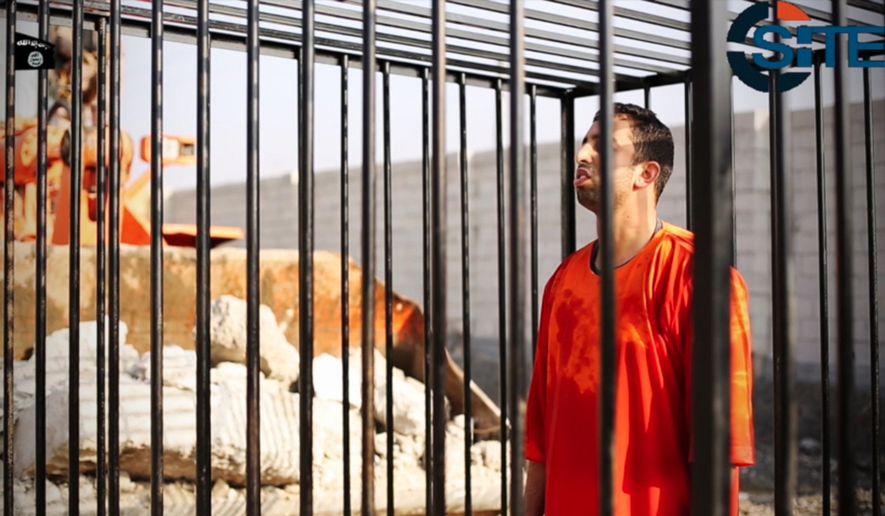OPINION:
When Japanese journalist Kenji Goto was beheaded by ISIS last week, there was wide speculation that Jordanian intervention might spare the life of a second hostage, Muath al-Kaseasbeh, a Jordan Air Force pilot. ISIS militants had captured the pilot when his F-16 crashed in Syria in December during U.S.-led coalition strikes near Raqqa.
ISIS said he would die if Jordan didn’t release Sajida al-Rishawi, a woman captured in 2005 when a bomb strapped to her body failed to detonate. She was part of an al Qaeda operation that targeted four hotels in Amman and killed 60 persons in the deadliest Islamist suicide attack in Jordan’s history.
Negotiations with barbarians never yield good results, and Tuesday the world learned that despite whatever Jordan offered it was not enough. ISIS burned Mr. al-Kaseasbeh alive while he was locked in a cage. This gruesome display takes ISIS’ one-by-one parade of its victims — including Haruna Yukawa, British aid workers, David Haines and Alan Henning, American journalists James Foley and Steven Sotloff and American aid worker Peter Kassig — to another level of barbaric outrage.
This outrage calls into question the prospects of an American woman held by ISIS, and challenges President Obama’s stubborn denial of what the world knows, that Islamic extremism is terrorism at its most terrible. After the death of Kenji Goto, Mr. Obama would call the murder only a “barbaric act,” as if it was merely a something that occurred to a bored barbarian.
The result of ISIS’ pairing of video documentation with unfathomable violence is the likely recruitment of disaffected Western youth, including Western women who seek aggrandizement, an ISIS husband, or an opportunity to bake cookies in paradise. Steven Pomerantz, former chief of counterterrorism at the FBI, thinks some Muslim girls embrace jihad as something to give meaning to their lives. “They’re looking for excitement,” Mr. Pomerantz tells CBS News. “They are looking for adventure. They are looking for social acceptance.” Some adventure, some society.
The revelation that the Islamic gunman Amedy Coulibaly rolled film as he prepared to slaughter victims at the Paris kosher food market further raises the stakes in the Islamic show and tell. “I am pledging my allegiance to the caliph of the Muslims, Abu Bakr al-Baghdadi,” he says on camera. “I have made a declaration of allegiance to the caliph and the declaration of a caliphate.” His “henchwoman,” Hayat Boumeddiene, flew to Istanbul before the attacks and disappeared across the Syrian border.
ISIS is locked in an endless search for recruits, and slickly produced video documentation of heinous crime is a call to arms. These videos, narrated by “Jihad John” and others from the West are meant to frighten the West. They target the vulnerable to persuade them to align with the fight. “Becoming wives of fighters seems to be a common thing,” says Mr. Pomerantz, “to take part in ISIL activities in that way, by marrying and producing jihadist children, or becoming part of the fight themselves. They hear the message, they hear the appeal and they are susceptible to it. There’s a variety of magazines, there are online websites, so there’s no shortage of message.”
They can watch a Jordanian hero being burned alive. What message does this send? What does it tell the impressionable about the messengers? And what does it tell Barack Obama?




Please read our comment policy before commenting.